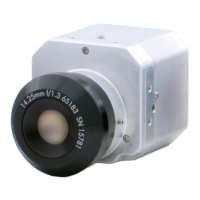8
Chapter
to go into its alarm state. This creates a
fail-safe system. If power to the camera is
lost, then there is no high level output to
the PLC, which treats that event just as if
a temperature had reached the setpoint,
thereby causing an alarm. This alerts
personnel that they have either lost the
monitoring function or there is indeed a
temperature rise.
Image monitoring. Receiving a warning
based on temperature measurements is
very useful, but the real power of IR-
based asset monitoring is in the camera’s
image processing capabilities. Control
room personnel can get live images from
IR cameras that visible light cameras
and other temperature detectors
cannot provide. Again, cameras vary by
manufacturer, but the most versatile ones
oer a variety of data communication
formats for sending thermographic
images to remote locations. Increasingly,
web-enabled cameras are used to allow
monitoring from any location where a PC
is available.
Figure 4 illustrates a system using
the FLIR A320’s Ethernet and TCP/IP
communication protocols in conjunction
with its alarm setpoint capabilities. The
Ethernet portion of the system allows
cable runs of up to 100 meters in length.
By communicating a digital alarm directly
to the PLC, it can immediately activate
a visual and/or audible alarm. The visual
alarm can appear on an annunciator
panel telling the operator where the
alarm originated; the operator then goes
to the PC to look at live image(s) of that
location. Images and temperature data
can be stored for future reference and
analysis.
A320 cameras can also be congured to
automatically send temperature data
and images to a PC via e-mail (SMTP) or
FTP protocol whenever the temperature
setpoint is reached, thereby creating a
record for subsequent review.

